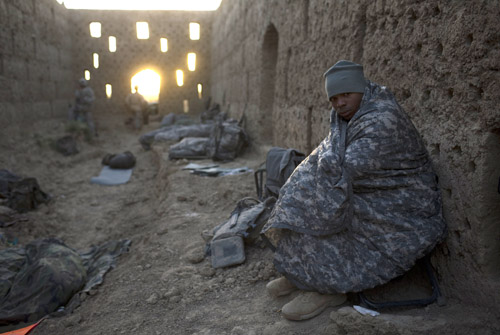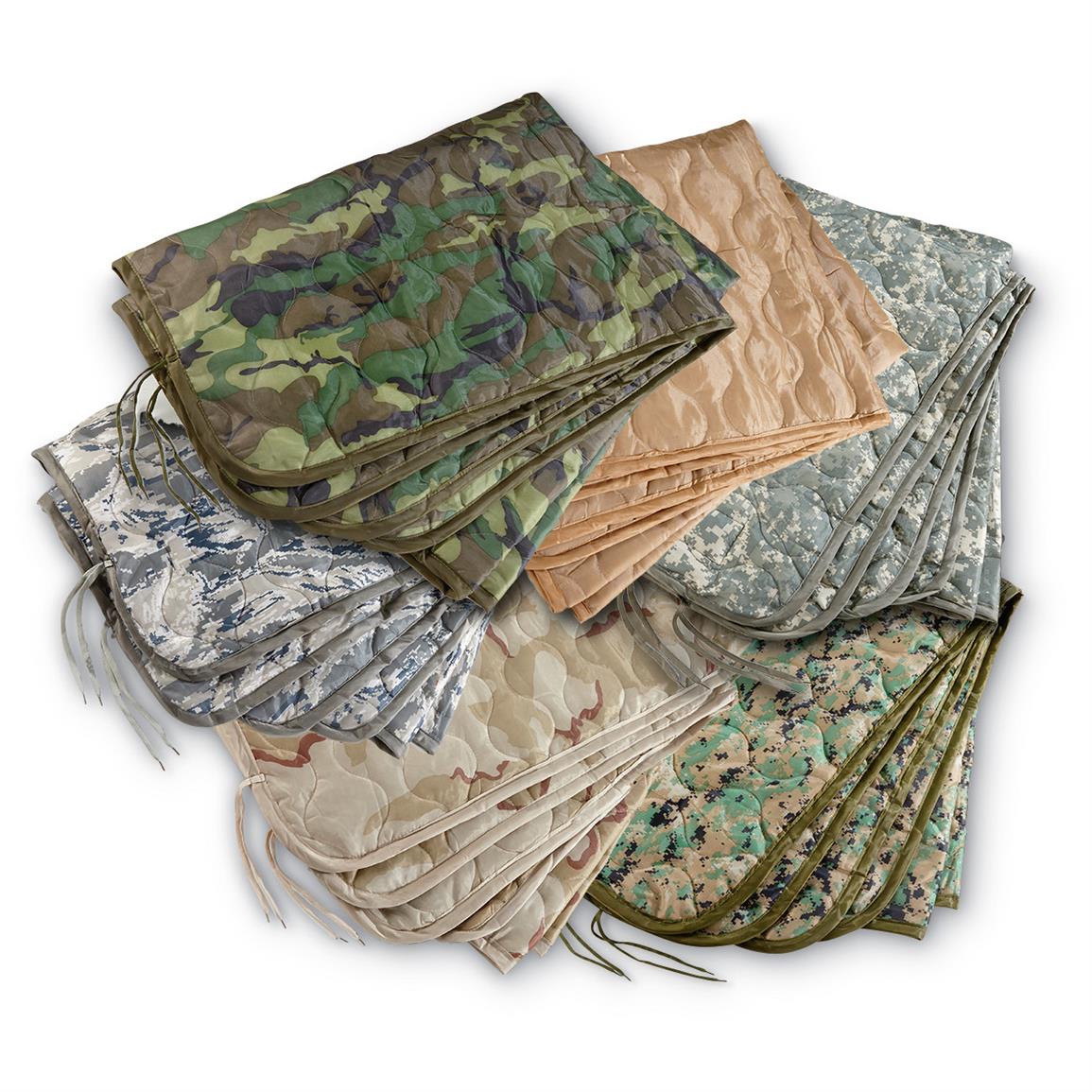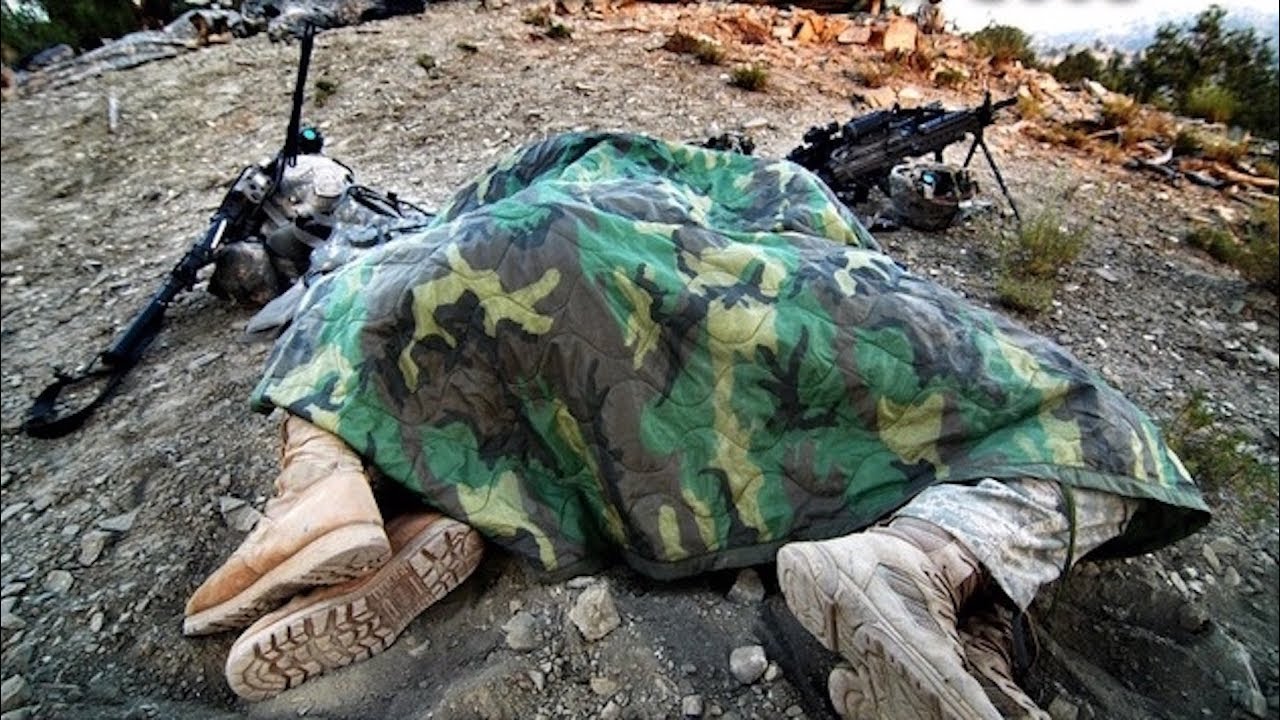AKA, the Poncho Liner
If you have served in the US Military since the 1960s, you know a secret that your non-military brethren may not know. That secret is a humble piece of equipment that does not seem like such a big deal, at least not until you are sitting on or curled up on the cold ground in the middle of the night. Then that secret is the best thing that has happened in your life in recent memory; the nylon quilted poncho liner, affectionately known to us ground troops as the “Woobie.”
“Woobie” is a word that you generally don’t expect to hear from weapon laden warriors, and I confess that the first time I heard it I thought my Sergeant was making fun of me. He was sending me out to a Listening Post (LP), or a small fighting position outside the main perimeter designed to detect enemy movement. “You’ll be out on the LP all night by yourself, so bring your woobie and extra radio batteries.” My puzzled look must have struck him as funny. “My woobie, Sa’rnt?” I asked. “Yes, your woobie, Private. Your poncho liner. Without it, you woobie cold.” I sure as hell would be; it was November in West Germany. I added yet another term to my growing vocabulary of military jargon that has never left me. I have since used the same phrase with my troops many times, “Without it, you woobie cold.”

My woobie has been an integral part of my equipment ever since. The woobie came into being in 1963, just prior to the Vietnam War. Over the years they have changed camouflage patterns to match the whims of Pentagon procurement pogues, from early ERDL type camo first used in Vietnam to the most current Muti-Cam and MARPAT patterns, and everything in between.

The simple woobie, as its official name suggests, is designed as a poncho liner. Military ponchos get used for a lot more than keeping rain off soldiers. They are tarps, ground covers, makeshift stretchers, and sometimes even body bags. The poncho liner has cloth ties on each corner and in the middle of each side so that it can be attached to the metal grommets on the poncho. With the head hole tied closed and the snaps fastened it doubles as a sleeping bag, although it is more commonly used separately from the poncho, because getting caught in a snapped-up poncho during an attack can turn your poncho into your last resting place. Constructed of 1.9oz Ripstop nylon cloth with thick Polyester batting sandwiched between the outer layers, and it is quilted for added strength and durability. It has a band of extra quilting along the width of the center for even more durability. It measures about 82″ x 62″, and features a rolled nylon edge binding which prevents tattering or edge wear.

Poncho liners have even been modified by soldiers and seamstresses the world over. That process actually began before the advent of poncho liners, with the woobie’s predecessor; the wool blanket. Wool blankets have been cut up and used as cold weather liners for field clothing since the advent of wool blankets. In the 1960s military ponchos were OD Green rubber coated canvas contraptions that worked pretty well but were very heavy by modern standards. Some enterprising GIs had their ponchos tailored into raincoats with zippers, some even added wool blankets for lining. In the 1970s the Army adopted the zippered rain jacket, but without a liner. So, my era, the 1980s, led to the advent of the poncho liner sewn into the rain jacket as a liner. We called them “Graf Parkas,” after the name of our biggest, muddiest training area in Germany, known as Grafenwohr. Graf parkas were the symbol of the seasoned soldiers, those who were not on their first rodeo, and were therefore highly sought after by those of us that were on our first rodeo. The US Military has since developed a great liner that can be added or removed by means of buttons and they are standard in all field jackets and Goretex rain gear.
The woobie, however, remain essentially unchanged. It is still one of the most commonly carried and used pieces of field gear in the US military. Even in those units that must move rapidly and therefore carry as little as possible, the woobie abounds. We have an old adage in the Army; “Travel Light, Freeze at Night.” It is not uncommon to reach your tactical objective before dawn and throw yourself on the ground for a nap with just your woobie to cover you. The “Freeze at Night” part is less likely if you bring your woobie.

Like many other veterans, my woobie holds a special place in my heart. Of all the things that have sucked and failed in my life, my woobie is not one of them. I still have and still use the first poncho liner I was issued in the Army. I told my supply SGT that I lost it, because I preferred to pay for it rather than give it back. That peace of gear outlasted my first marriage and is older than all my children. All of my children have temporarily adopted one of my woobies at some point in their childhood. Temporarily.
Poncho liners are available from numerous sources and are pretty affordable at around $30.00. Now that I have shared the military secret with all of my readers, military and otherwise, all I can do is hope you take my advice: Travel light, (but don’t) freeze at night.